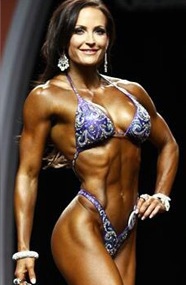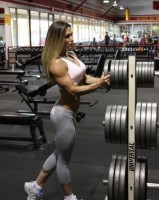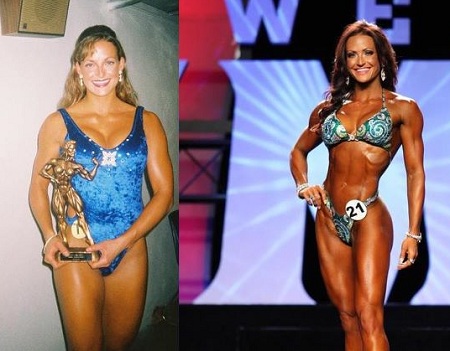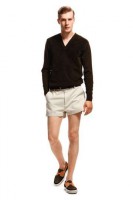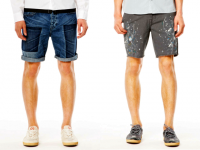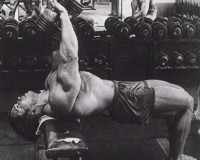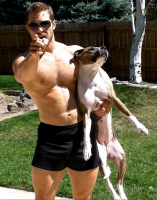The majority of people in what I call “the online training communities” are general strength and conditioning trainees. That means they are lifting, doing high intensity conditioning, but not much else. They may be competing in powerlifting, Olympic weightlifting or CrossFit, but those sports or competitions feature testing movements that are repeated over and over in training, albeit in different variations. Unfortunately some athletic elements are neglected, no matter how much CrossFit wants to claim athletic supremacy or strength trainees want to claim magical athletic prowess just because they are stronger.
(Here’s a completely inarticulate video about agility ladders. Watch Chris on the ladder — he’s very deft for a 310 pound guy)
General strength and conditioning training doesn’t include many dynamic movements that require re-positioning the body in space. Or any activities that require reaction to visual or other sensory stimulus. And there especially aren’t any rotation or lateral shear stresses on the spine, though we won’t be getting into that today. Instead, we’re focusing on those important athletic skills under the umbrella of “mobility” like agility, speed, balance, and overall kinesthetic coordination. These skills aren’t present in most general types of training, but are prevalent in high school, collegiate, and professional sport training programs. And I think it’s something everyone should utilize.
Agility, or foot work, drills are the easiest activity to add to your training. They aren’t significantly stressful, they can be done in a short amount of time, and can be done as part of your warm-up. Agility drills will also be a safe way for your lower leg structures to adapt to actual activity — stuff other than walking around and squatting. The drills will develop overall coordination, improve balance, and do so dynamically. It’s one thing to think, “I have good balance” when your feet are planted firmly under your shoulders, but it’s another thing entirely to move quickly and need to change direction without losing your balance. At the very least this is useful in a worst case scenario (dodging a moving car, fighting someone, etc.).
Agility ladder drills are a great way to perform foot drills and can be performed as part of the warm-up. I suggest doing your mobility work first, then go ahead and start on the ladder. Drills can be done for 5 to 10 minutes as a general warm-up before moving to your lifting schedule. Whatever drills you perform won’t be debilitating to your lifting, and if it is you are probably out of shape and need to do some conditioning work anyway. If you were going to lift maximally, then I would excuse you from agility work, but if you don’t compete in a strength sport I would have you do agility ladder drills as part of your warm-up every day. Especially for team sport athletes and soldiers.
I’m not going to get into the drills here — this is more of a post to teach the utility in doing agility ladder work — but some of the good ones include one foot in every hole (forward and lateral), one foot in every other hole (forward or lateral), single Ickey shuffle, double Ickey shuffle, and hop scotch. Running through each of those seven drills once will only take a few minutes. You can do two reps of each drill to get some more work in. The best drills are the single and double Ickey shuffles with the single version being the best. It’s excellent at teaching a person how to shift their weight laterally, how to maintain balance while changing directions, and improves foot speed. These drills can also be used as high intensity conditioning work, and you could even time your rest periods. If you aimed to use ladder drills as conditioning, then it would be okay to do them at the end of your training session (though your skill and agility development will be inhibited when you are fatigued).
Briefly, a point of emphasis in all agility work, including ladder drills, is to keep the feet under the hips. If the feet extend out in front, behind, or to the sides of the hips, then the base of support diminishes. Change of direction is dependent on having your feet under your center of mass to quickly apply force to stop or start, so keep the feet under the hips. To use the single Ickey shuffle as an example (which is what Chris and I do in the video above), must people will step too far lateral with their outside foot preventing a good base to push off that foot to move in the opposite direction — Chris does this a little bit. Keeping the feet under the hips is the key to agility and lateral speed. It’s also useful to burst into a ten yard sprint after completing the last segment of the ladder drill — it will teach the transition from agility or lateral movement to linear speed.
You can find cheap ladders on Amazon or sport stores, but I am partial to ladder segments that don’t slide up and down the straps. It can be quite annoying setting up a ladder with segments pushed around in a big bungle fuck. Most ladders are about 10 yards long, and that’s all you would need for training (we used a longer one in the above video).
If you want a new, interesting, method to warm-up and develop important athletic skills, then try out an agility ladder. When I played football I prided myself on my foot work and lateral speed, but that was probably due to the fact that I was linearly slow. Throw it in as a regular warm-up, or put it at the end of your workout for conditioning (doing agility work when tired is better than no agility work at all). Focus on a good, athletic body position (knees/hips bent, slight forward lean) with the feet under the hips. You’ll improve your coordination, perform conditioning that isn’t laborious, and ultimately improve your athletic ability with regular work.

